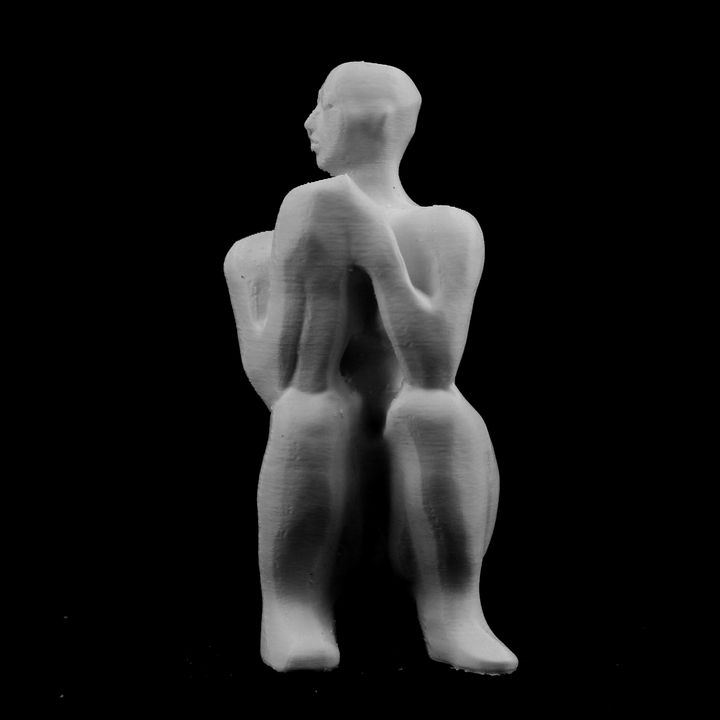
Reklama
3D tiskárny



AONN.cz
Sp┼Ö├ítelen├ę Weby
|
3D modely ARTAkua Ba at the Tate Britain, London, UK

Akua Ba is a figurative sculpture carved out of a single block of acacia wood. A naked female figure, seated on a low stool, clasps in her hands some sort of object. The anatomical exaggerations of her body and the formal arrangement of the sculpture suggest a variety of non-European precedents, including ancient South American and African sculpture. For the critic R. H. Wilenski writing in 1932, Akua-Ba revealed John Skeaping's knowledge of Asian, Pacific and African sculpture. He suggested that through this wholly successful amalgam of non-European aesthetic principles Skeaping ‘sought not only to organise form, but also to capture a direct uninhibited vision of the naked human body as the negro sculptors captured it, and to convey the meaning of this vision in the intensity of the formal meaning – as was done so miraculously by the Assam sculptors. He has tried, like the negro sculptors, to convey the meaning of the perception by means of the meaning of the form’ (R. H. Wilsenksi The Meaning of Modern Sculpture, London 1932, p.149). The title refers to the Ashante legend of Akua from Ghana, Africa, a barren woman who was instructed by a priest to care for a small wooden doll (dua ba) as if it were a real child so that she might conceive. This she did, and in time she became pregnant. The doll became known as Akua'ba (Akua's child) and such dolls, with their distinctive thin, circular heads and small stick-like bodies often wrapped in cloth, are still commonly found in the Ashante region. Skeaping's sculpture shows the crouching figure of Akua holding in her hands an object which presumably represents the wooden doll in the story. Using a technique known as direct carving, Skeaping worked on the block without pointing up from a maquette or any other intermediary stage. For such artists as Jacob Epstein (1880-1959) and Constantin Brancusi (1876-1957) before the First World War (1914-18), and later Henry Moore (1898-1986), Barbara Hepworth (1903-75) and Skeaping, direct contact with the material was the only way in which they felt they could respond to the particular qualities of stone or wood. The topic of human conception and birth was a common subject in their work. In a statement published shortly before he made Akua-Ba, Skeaping said ‘The material adapts itself to my ideas and unconsciously my ideas are created by my material and, such is the harmony, I do not feel limited in my expression’. With its knots and unique variations in grain, wood is particularly responsive to such an approach. In Akua-Ba, Skeaping uses the grain to accentuate the figure’s powerful musculature and to add a linear rhythm to the formal undulations of the sculpture. This is more apparent in early photographs that show the piece before the wood darkened with age and the grain became obscured. These same photographs confirm that the cracks running through the sculpture have always been an intrinsic part of it. The wood for this sculpture came from an acacia tree that had been felled on Acacia Road in North London near Skeaping’s studio. Despite the local source of this particular block, the acacia is a native tree of Africa. The use of non-indigenous materials was fairly common for Skeaping and Hepworth at this time and was perceived by Wilenski, among others, to add to the exoticism of the works. n├íhodn├Ż v├Żb─Ťr model┼»
|
©Ofrii 2012
| |||